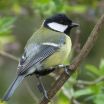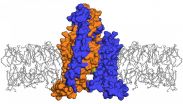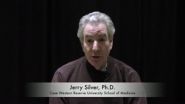(Press-News.org) Birds learn new foraging techniques by observing others in their social network, 'copycat' behaviour that can sustain foraging 'traditions' that last years, according to a study of how innovations spread and persist in wild great tits (Parus major).
The study involved experiments with eight local populations of great tits in Wytham Woods, Oxfordshire (UK). In five of the populations two male birds were trained to slide a puzzle box door either to the left or to the right. In three control groups two males were captured but not trained. The birds were then released back into their original populations to act as 'innovators', together with puzzle boxes that revealed a tasty mealworm reward when opened from either side. Electronic tags on the birds recorded how the two box-opening methods spread in each of the local populations through social network links.
Despite both methods working equally well, the team, led by Oxford University researchers, found that each experimental population strongly favoured the puzzle-solving solution that had been introduced by the trained birds. The preference for this arbitrary solution increased over time, forming a stable tradition. In the control populations, by contrast, it took much longer for birds to learn to solve the puzzle box.
When the experiments were repeated a year later each population still favoured their own 'traditional' method even though only 40% of each population of 75-100 birds were survivors from the previous year. The researchers were able to show that, even when birds discovered both ways of opening the puzzle-box, they were much more likely to use the behaviour that was dominant in their local population; in other words, they conformed to the behaviour in their local population.
The research, reported in this week's Nature, is the first experimental demonstration of the spread of culture, and the operation of conformist learning in a wild non-primate. The team included scientists from the University of Ottawa, Canada, the Australian National University, Canberra, Australia and the University of Exeter, UK, and was supported by the Biotechnology and Biological Sciences Research Council (BBSRC), the Natural Environment Research Council (NERC) and the European Research Council (ERC).
'In humans, new traditions arise when novel behaviours spread through social network ties via a process of observational learning. But we really have very little knowledge if similar processes are happening in animal populations,' said report author Dr Lucy Aplin of Oxford University's Department of Zoology. 'We were able to experimentally demonstrate that sustained foraging traditions can occur in wild great tits. This appears to have been partly due to a process of conformity - the birds were preferentially copying the majority behaviour.'
The team collected data from electronic tags worn by individual birds and data-loggers fitted to each puzzle box to track how the two different box-opening methods spread from two trained individuals through a population. From this data the researchers were able to build up a picture of the birds' social networks and how they learned from each other. The team's analysis showed that rather than adopting a mix of equally-efficient solutions there was an increasing bias so that after four weeks almost all individuals had adopted one solution.
Professor Ben Sheldon, Director of the Edward Grey Institute at Oxford University's Department of Zoology, said: 'Our experiments suggest that birds can learn through observation, and that this may help create arbitrary local 'cultural traditions'. Because the particular form of these traditions has no bearing on survival it might be expected that they would be eroded over time as older birds die and are replaced by newcomers. However, our work shows that once a majority in a group adopt one way of doing things these cultural traditions are passed on to the next generation and may persist over years.'
Dr Lucy Aplin of Oxford University's Department of Zoology, first author of the report, added: 'Even when a great tit already has experience of using one method, if it moves to a new area which favours the alternative solution this bird is likely to adopt the method preferred by its new group. It is as if its own personal experience is being over-written by the majority behaviour.'
Whilst traditions and cultural behaviour might well exist in other animals besides primates, this is notoriously difficult to study in wild populations. It is only with new technologies, such as passive integrated transponder (PIT) tags and RFID-enabled data-loggers, that large-scale experiments investigating animal culture are possible. As innovative and opportunistic foragers with complex social networks, great tits make the ideal model for studying the spread, establishment, and persistence of such 'animal culture'.
INFORMATION:
Whether stubbing a toe or stroking a cat, the sensation of touch starts out as a mechanical force that is then transformed into an electrical signal conveying pain or other sensations. Tiny channels in neurons act as translators by helping to formulate that signal to the brain. However, scientists know little about the fine details of how these channels work.
New work at Rockefeller University has revealed that one such channel in humans responds to mechanical force using a never-before-seen mechanism. Researchers led by Roderick MacKinnon, John D. Rockefeller Jr. Professor ...
A team of biomedical engineers at Washington University in St. Louis, led by Lihong Wang, PhD, the Gene K. Beare Distinguished Professor of Biomedical Engineering, has developed the world's fastest receive-only 2-D camera, a device that can capture events up to 100 billion frames per second.
That's orders of magnitude faster than any current receive-only ultrafast imaging techniques, which are limited by on-chip storage and electronic readout speed to operations of about 10 million frames per second.
Using the Washington University technique, called compressed ultrafast ...
VIDEO:
NIH-funded scientists developed a promising new drug that may lead to spinal cord injury treatments.
Click here for more information.
Injections of a new drug may partially relieve paralyzing spinal cord injuries, based on indications from a study in rats, which was partly funded by the National Institutes of Health
The results demonstrate how fundamental laboratory research may lead to new therapies.
"We're very excited at the possibility that millions of people ...
Case Western Reserve scientists have developed a new chemical compound that shows extraordinary promise in restoring function lost to spinal cord injury. The compound, which the researchers dubbed intracellular sigma peptide (ISP), allowed paralyzed muscles to activate in more than 80 percent of the animals tested. The remarkable study, partly funded by the National Institutes of Health, appears in the December 3 edition of the journal Nature.
Case Western Reserve University School of Medicine Professor of Neurosciences Jerry Silver, PhD, the senior author, led an international ...
Pilots are trained to guard against vertigo: a sudden loss of the sense of vertical direction that renders them unable to tell "up" from "down" and sometimes even leads to crashes. Coming up out of a subway station can produce similar confusion: For a few moments, you are unsure which way to go, until regaining your sense of direction. In both cases, the disorientation is thought to be caused by a temporary malfunction of a brain circuit that operates as a three-dimensional (3D) compass.
Weizmann Institute scientists have now for the first time demonstrated the existence ...
Extensive areas of the world's deltas -- which accommodate major cities such as Shanghai, Dhaka and Bangkok -- will be drowned in the next century by rising sea levels, according to a Comment piece in this week's Nature. In the article, Dr. Liviu Giosan, a geologist with the Woods Hole Oceanographic Institution (WHOI), and colleagues call for maintenance efforts to be started now to avert the loss of vast expanses of coastline, and the consequent losses of ecological services, economic and social crises, and large-scale migrations.
Problems start upstream: deltas are built ...
HOUSTON - (Dec. 3, 2014) - A novel mechanism - similar to how normal tissue stem cells respond to wounding - might explain why bladder cancer stem cells actively contribute to chemo-resistance after multiple cycles of chemotherapy drug treatment. Targeting this "wound response" of cancer stem cells can potentially provide a novel approach for therapeutic invention, said researchers from the National Cancer Institute-designated Dan L. Duncan Cancer Center at Baylor College of Medicine.
The results of their study appear online in the journal Nature today.
"Treatment ...
LA JOLLA, CA--December 3, 2014--A team led by biologists at The Scripps Research Institute (TSRI) has solved a long-standing mystery in neuroscience by identifying the "mechanoreceptor" protein that mediates the sense of touch in mammals.
Mice that lack the Piezo2 ion-channel protein in their skin cells and nerve endings lose nearly all their sensitivity to ordinary light touch, but retain a mostly normal sensitivity to painful mechanical stimuli.
"We can say with certainty that Piezo2 is the principal touch sensor in mammals," said Ardem Patapoutian, professor at TSRI ...
Researchers from the African Genome Variation Project (AGVP) have published the first attempt to comprehensively characterise genetic diversity across Sub-Saharan Africa. The study of the world's most genetically diverse region will provide an invaluable resource for medical researchers and provides insights into population movements over thousands of years of African history. These findings appear in the journal Nature.
"Although many studies have focused on studying genetic risk factors for disease in European populations, this is an understudied area in Africa," says ...
ROSEMONT, Ill.--Compression fractures in the spine due to osteoporosis, a common condition causing progressive bone loss and increased fracture risk, are especially common in older women. A new study appearing in the December 3rd issue of the Journal of Bone & Joint Surgery (JBJS) found that patients who wore a brace as treatment for a spinal compression fracture had comparable outcomes in terms of pain, function and healing when compared to patients who did not wear a brace.
Nearly 700,000 men and women suffer from a spinal compression fracture each year. These fractures, ...




